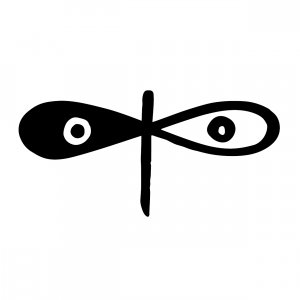
Rossella Rizzo
Author's books
Isamu Noguchi
pages: 168 images
Sculptor, designer, scenographer, architect, landscape architect, Isamu Noguchi (1904-1988) was a complete artist who intimately linked his art to his life, in all its aspects. Dividing his time between the United States and Japan - his two homelands -, between abstraction and figuration, modernity and tradition, art and design, he worked without e
L'affaire Capa
Processo a un'icona
Vincent Lavoie
pages: 167 pages
In 1937, Spain was in the midst of a devastating civil war. In July, a special report in Life magazine gave a tragic account of the lives cut short in one year of combat. The article was accompanied by Robert Capa’s The Falling Soldier, a photograph destined to become an icon of republican heroism known around the world. The image places viewers
Delirious Museum
Un viaggio dal Louvre a Las Vegas
Calum Storrie
pages: 256 pages
In the guise of the flâneur and a situationist, Calum Storrie embarks on an imaginary voyage of discovery of different cities and eras that sees him explore a series of environments – public places, architecture, but also historical exhibitions and artworks – all of which are possible embodiments of the concept of the “delirious museum”. T
Come vedere il mondo
Un'introduzione alle immagini: dall'autoritratto al selfie, dalle mappe ai film (e altro ancora)
Nicholas Mirzoeff
pages: 220 pages
The fact that the power of images has grown out of all proportion is obvious to everyone. With the advent of new media, image production has increased massively and the circulation of images is so pervasive that it affects every moment of our lives. In the United States alone, more photographs are taken every two minutes than were taken throughout
Carlo Scarpa. L'arte di esporre
L'arte di esporre
Philippe Duboÿ
pages: 268 pages
The name of Carlo Scarpa (1906-1978) is intrinsically linked to the history of art, taste and museology of the 20th century, so much so that in the seventies the French art historian André Chastel wrote: “Many of those who travel round Italy know him without realizing it: he is the greatest organizer of art exhibitions in Europe”. He still sta
Jackson Pollock
Energia resa visibile
B.H. Friedman
pages: 308 pages
In the spring of 1955, when the young B.H. Friedman met Jackson Pollock for the first time, he was already an “old master” of Abstract Expressionism. With his powerful physique and explosive talent, Pollock had gained international fame through a body of work that encompassed a vast range of expression, from delicate lyricism to fierce, violent
Hybris
La fabbrica del mostro nell'arte moderna. Omuncoli, giganti e acefali
Jean Clair
pages: 166 pages
Once merely an exception and object of curiosity, the monstrous has become a common experience, overrunning everything with its troubled, deviant forms that defy the harmony of the classic canon. Indeed, in a disconcerting shift in perspective, disproportion, or hybris, has become the rule.
The abyss opened in 1895, when the many revolutionary dis






